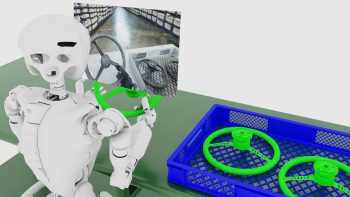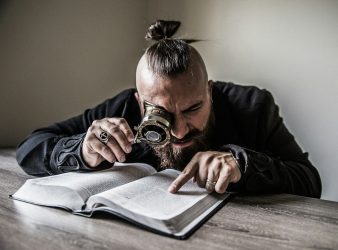Hello, tech enthusiasts! Emily here, coming to you from the heart of New Jersey, the land of innovation and, of course, mouth-watering bagels. Today, we’re diving headfirst into the fascinating world of 3D avatar generation. Buckle up, because we’re about to explore a groundbreaking research paper that’s causing quite a stir in the AI community: ‘StyleAvatar3D: Leveraging Image-Text Diffusion Models for High-Fidelity 3D Avatar Generation’.
II. The Magic Behind 3D Avatar Generation
Before we delve into the nitty-gritty of StyleAvatar3D, let’s take a moment to appreciate the magic of 3D avatar generation. Imagine being able to create a digital version of yourself, down to the last detail, all within the confines of your computer. Sounds like something out of a sci-fi movie, right? Well, thanks to the wonders of AI, this is becoming our reality.
The unique features of StyleAvatar3D, such as pose extraction, view-specific prompts, and attribute-related prompts, contribute to the generation of high-quality, stylized 3D avatars. But what makes these avatars truly remarkable is their ability to capture the essence of the individual they represent. It’s a feat that was previously unimaginable, but now, with StyleAvatar3D, we have a tool that can create avatars that are not only visually stunning but also deeply personal.
However, as with any technological advancement, there are hurdles to overcome. One of the biggest challenges in 3D avatar generation is creating high-quality, detailed avatars that truly capture the essence of the individual they represent. This is where StyleAvatar3D comes into play.
III. Unveiling StyleAvatar3D
StyleAvatar3D is a novel method that’s pushing the boundaries of what’s possible in 3D avatar generation. It’s like the master chef of the AI world, blending together pre-trained image-text diffusion models and a Generative Adversarial Network (GAN)-based 3D generation network to whip up some seriously impressive avatars.
What sets StyleAvatar3D apart is its ability to generate multi-view images of avatars in various styles, all thanks to the comprehensive priors of appearance and geometry offered by image-text diffusion models. It’s like having a digital fashion show, with avatars strutting their stuff in a multitude of styles.
IV. The Secret Sauce: Pose Extraction and View-Specific Prompts
Now, let’s talk about the secret sauce that makes StyleAvatar3D so effective. During data generation, the team behind StyleAvatar3D employs poses extracted from existing 3D models to guide the generation of multi-view images. It’s like having a blueprint to follow, ensuring that the avatars are as realistic as possible.
But what happens when there’s a misalignment between poses and images in the data? That’s where view-specific prompts come in. These prompts, along with a coarse-to-fine discriminator for GAN training, help to address this issue, ensuring that the avatars generated are as accurate and detailed as possible.
V. Diving Deeper: Attribute-Related Prompts and Latent Diffusion Model
Welcome back, tech aficionados! Emily here, fresh from my bagel break and ready to delve deeper into the captivating world of StyleAvatar3D. Now, where were we? Ah, yes, attribute-related prompts.
In their quest to increase the diversity of the generated avatars, the team behind StyleAvatar3D didn’t stop at view-specific prompts. They also explored attribute-related prompts, adding another layer of complexity and customization to the avatar generation process. This is where things get really interesting, as we can now create avatars that not only match our physical appearance but also our personality, style, and even emotional state.
But what’s even more impressive is the use of latent diffusion models in StyleAvatar3D. These models allow for the creation of high-quality, detailed avatars from a much smaller dataset than previously thought possible. It’s like having access to an infinite library of 3D models, all at your fingertips.
VI. The Future of 3D Avatar Generation
So, what does this mean for the future of 3D avatar generation? With StyleAvatar3D, we can now create avatars that are not only visually stunning but also deeply personal and customizable. We can use these avatars in a wide range of applications, from virtual reality to video games, and even in fields like education and healthcare.
But what’s most exciting is the potential for StyleAvatar3D to revolutionize our understanding of human identity and expression. With the ability to create avatars that capture the essence of an individual, we can now explore new dimensions of self-expression and creativity.
VII. Conclusion
That’s all for now, folks! Emily signing off. Stay curious, stay hungry (for knowledge and bagels), and remember – the future is here, and it’s 3D!
Chi Zhang, Yiwen Chen, Yijun Fu, Zhenglin Zhou, Gang Yu1,Zhibin Wang, Bin Fu, Tao Chen, Guosheng Lin, Chunhua Shen
ArXiv: https://arxiv.org/abs/2305.19012
– PDF: https://arxiv.org/pdf/2305.19012v1.pdf



